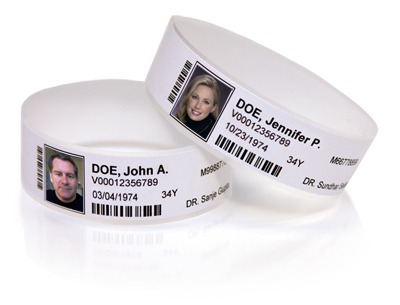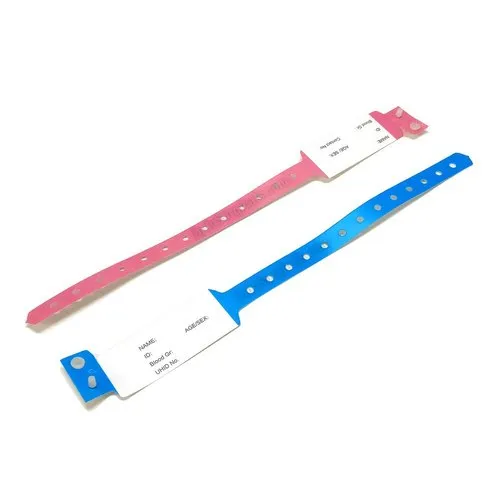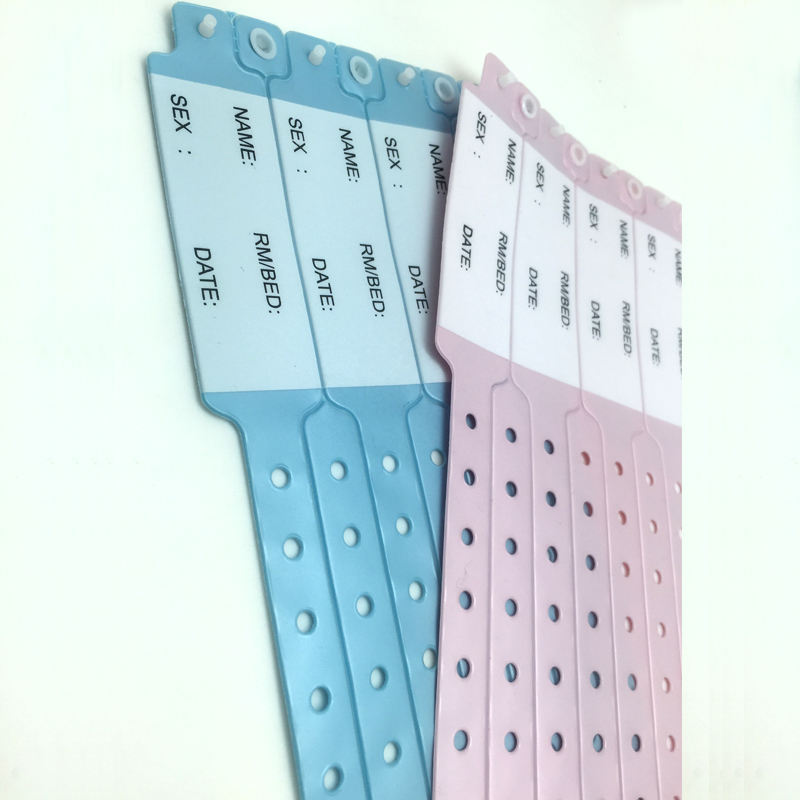Improving Patient Treatment With Reliable Recognition Bands
The application of efficient identification bands is a pivotal element in enhancing person treatment within health care setups. These bands not only serve to reduce the dangers connected with person misidentification but additionally simplify interaction among clinical employees, consequently fostering a more secure atmosphere. Various types of identification bands deal with particular requirements, from durable wristbands for grownups to specialized bands for babies and essential cases. As the landscape of patient recognition progresses, one must think about the implications of these systems on total medical care delivery and individual outcomes. What innovations wait for in this important location?
Value of Client Identification
Making sure precise individual recognition is crucial in health care setups, as it directly influences the safety and security and quality of care given. Misidentification can result in significant mistakes, including administering the wrong drug, doing wrong treatments, or miscommunicating vital person information. Such errors not just jeopardize patient safety and security yet can likewise cause lawful ramifications and lowered count on medical care systems.
Reliable person identification is essential to establishing a safe atmosphere where individuals receive tailored and suitable care. It facilitates the accurate paperwork of clinical histories, allergic reactions, and treatment strategies, making sure that healthcare companies have accessibility to necessary info in all times. Durable recognition methods assist simplify communication amongst clinical personnel, boosting partnership and minimizing the danger of mistakes.

Kinds Of Identification Bands
Recognition bands play a crucial duty in maintaining precise individual documents and improving security within healthcare settings. Various sorts of identification bands are made use of to satisfy the specific demands and requirements of different individual populaces.

Another kind is the ankle joint band, which is especially beneficial for infants and infants, ensuring that identification remains undamaged also during care procedures. Specialty bands, such as those for allergic reaction notifies or drop threat signs, provide extra layers of safety and security by drawing prompt interest to critical client conditions.
Just recently, digital identification bands have gotten popularity, including barcodes or RFID innovation that can be scanned to rapidly get patient data. These bands simplify workflows and reduce the risk of human error throughout person recognition procedures.
Benefits of Effective Recognition
Effective recognition of clients with making use of recognition bands adds substantially to overall client safety and security and care top quality. By guaranteeing that each individual is accurately identified, medical care providers can effectively match medical therapies and procedures to the right person, lessening the danger of errors. This is particularly vital in atmospheres with high individual turnover, where the capacity for misidentification is greater.
In addition, reliable identification bands enhance communication among health care groups. Clear and accurate client identification cultivates partnership and guarantees that all employee are mindful of a client's specific demands and clinical background. This communication is crucial for delivering collaborated care, specifically in emergency situation scenarios where time is important.

Inevitably, reliable identification through the use of recognition bands not just safeguards people yet likewise advertises a culture of security within healthcare centers (Patient Identification Band). By focusing on exact recognition, medical care companies can enhance results and boost the general patient experience
Applying Recognition Systems
While the relevance of person identification is well recognized, the application of durable identification systems presents a facility obstacle for health care companies. Establishing efficient recognition systems needs an extensive approach, encompassing technology, workers training, and procedure assimilation.
First, organizations need to select appropriate recognition technologies, such as barcode scanning, RFID, or biometric systems. Patient Identification Band. These innovations ought to be assessed based upon price, usability, and compatibility More Help with existing infrastructure. A pilot program can help determine potential concerns prior to full-blown implementation
Next, comprehensive training for personnel is vital. All employees must comprehend the importance of exact patient recognition and excel in making use of the selected technologies. Routine training updates and analyses can enhance finest techniques and make certain ongoing conformity.
In addition, health care companies ought to create standardized treatments for person recognition throughout all departments, enhancing and lessening inconsistencies interaction. Regular audits can help determine spaces in adherence to these protocols.

Eventually, a reliable implementation of recognition systems not only improves patient security but additionally cultivates a culture of liability and diligence within medical care settings, making sure consistent and trusted client treatment.
Future Trends in Person Identification
Innovations in modern technology are readied to transform person identification techniques in medical care settings. The integration of biometric identification methods, such as fingerprinting and face acknowledgment, is expected to enhance accuracy and safety and security. These innovations can significantly decrease the risk of misidentification, making sure that clients receive the right treatments and medicines.
Moreover, the application of blockchain innovation for client records is gaining grip. This decentralized technique can offer a secure and tamper-proof approach for taking care of patient identifications, consequently enhancing access to essential information throughout different health care carriers.
Another trend is the enhancing use of mobile health applications that take advantage of QR codes for individual identification. These applications enable for real-time updates and easy view it now access to individual information, empowering medical care specialists to make informed choices promptly.
In addition, man-made knowledge (AI) is poised to play an essential duty in examining individual recognition data, determining patterns, and forecasting possible identification errors before they occur.
As these modern technologies develop, they guarantee not only to enhance person safety and security yet additionally to enhance the total effectiveness of medical care delivery systems. Embracing these advancements will certainly be important for future-proofing patient care methods.
Conclusion
Finally, effective identification bands are important for improving patient security and care quality within health care setups. By decreasing the dangers related to misidentification, these bands facilitate timely and precise information access, ultimately improving interaction among healthcare service providers. The implementation of robust identification systems not only fosters a society of safety yet likewise placements healthcare organizations to adjust to future trends in client identification innovation, guaranteeing optimum outcomes for patients in varied professional environments.
As the landscape of individual identification progresses, one should consider the implications of these systems on overall healthcare shipment and client end results.Reliable individual recognition is basic to developing a safe environment where individuals get proper and tailored care. Eventually, prioritizing reliable person identification approaches not just cultivates a society of safety yet likewise contributes to boosted person end results and overall complete satisfaction with healthcare solutions.
Effective identification of patients with the usage of identification bands contributes substantially to total client security and care quality. The application of durable identification systems not just fosters a society of safety and security yet also placements health care organizations to adjust to future trends in individual recognition modern technology, ensuring ideal results for patients in varied scientific environments.